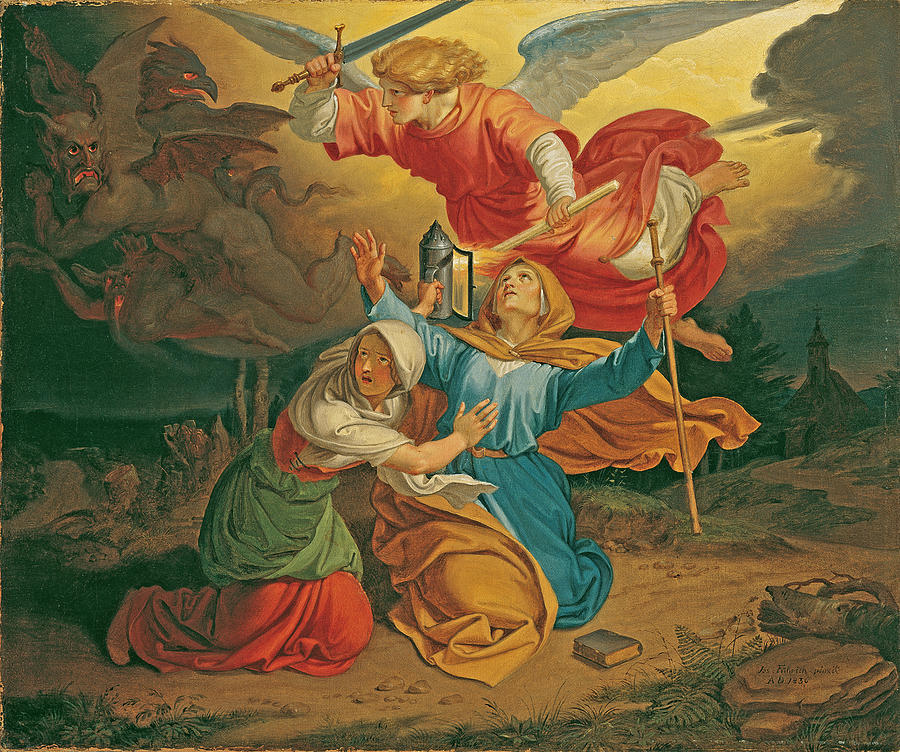Saint Gudula
 Saint Gudula was born in 646 AD in the Pagus of Brabant (modern day Brussels). Her father was a duke of Lotharingia and her mother was Saint Amalberga. Saint Gudula's siblings are also venerated as Saints - her sisters Saint Pharaildis and Saint Reineldis as well as her brother Saint Emebertus. Saint Gudula was educated by her godmother, Gertrude of Nivelles in the abbey of Nivelles until Gertrude died, at which point she moved back to her home at Moorsel. She was renown for her religious devotion and works of charity for the poor, frequently visiting the church of Moorsel.
Saint Gudula was born in 646 AD in the Pagus of Brabant (modern day Brussels). Her father was a duke of Lotharingia and her mother was Saint Amalberga. Saint Gudula's siblings are also venerated as Saints - her sisters Saint Pharaildis and Saint Reineldis as well as her brother Saint Emebertus. Saint Gudula was educated by her godmother, Gertrude of Nivelles in the abbey of Nivelles until Gertrude died, at which point she moved back to her home at Moorsel. She was renown for her religious devotion and works of charity for the poor, frequently visiting the church of Moorsel. Saint Gudula is often depicted holding a candle and a lamp. This image can be traced back to a famous legend that tells of Saint Gudula being frequently interrupted on her way to church each morning before cock-crow. The demon, so angry with this pious act, interrupted her walk by extinguishing the light of the candle, leaving her in darkness. Saint Gudula prayed to God for assistance and received light from God, rekindling her lantern and preventing it from being extinguished again. The flower tremella deliquecens is known as Sinte Goulds lampken as it bears fruit in the beginning of January.
When Saint Gudula died, her relics were buried at Ham in Eastern Flanders. About a century later, her relics were moved from Ham to the church of Saint-Sauveur at Moorzelle and interred behind the altar there. In 1047, Count Balderic of Louvain moved the relics into the church of Saint-Michel. In 1330, the church of Saint Gudula at Brussels was completed and many indulgences given for any who helped decorate and build it. Tragedy fell upon the church though in 1579, when the protestant Geuzen pillaged and wrecked the church.
Today the feast of Saint Gudula is celebrated on January 8th except in the diocese of Ghent (where Moorsel is located) where it is held on January 19th.
thepathtosainthood.com
